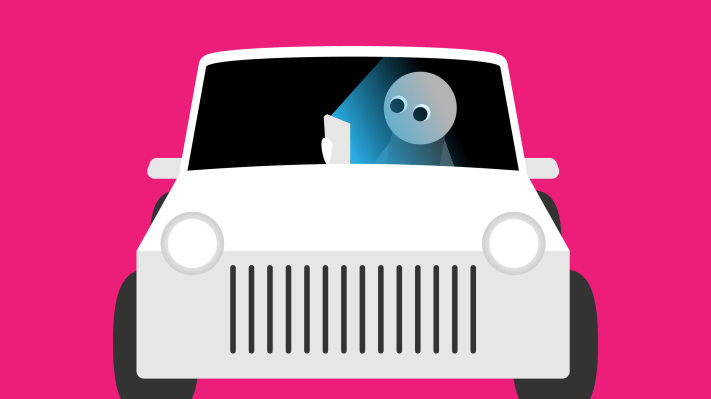Uber has always been a bit of a wild card in local advertising. It knows where you’re going and where you’ve been, which has bred speculation about delivering local ads. And consumer buying intent is arguably heightened when Ubering about town.
But I’ve been skeptical about Uber actually delivering ads — the company is careful not to jeopardize a large primary revenue stream with a marginal one. Ads could diminish the rider experience at a time Uber is blitzing user growth.
But for a company with such rapid revenue growth — though still unprofitable — it will need to build incremental revenue to maintain growth when its core business matures. And it’s planting those seeds already.
A few recent moves have begun to triangulate how Uber could do this. It will be all about enhancing the in-ride experience, then, down the road, an ad model. And that won’t involve in-car signage or digital displays, as some have speculated.
Instead, it will be where our attention is already fixed during Uber rides: staring down at the warm glow of our phones. My prediction is that Uber will monopolize that time through personalized and premium content that’s served through the app during rides.
The beginnings of this strategy can already be seen in its recent UI update. The under-recognized feature of that update is what I’m calling “ride mode.” It takes over the app while a trip is underway, including maps, ETA and other useful info.
Some of that already existed, such as a map, but the new UI creates a more tangible portal with options and in-ride utilities. The next step will be content deals that give riders free access to otherwise paid content for the duration of their ride.
Like it did with in-ride Snapchat custom filters, this will involve deals with the likes of Netflix and Spotify, highlighting content that fits your trip duration. Think: Southwest’s “bring your own device,” versus a NYC taxi’s slimy and outdated touchscreens.
The components of an in-car media future are materializing.
Stepping back, this is all bearing toward convergence with another key movement: self-driving cars. A key part of that movement — along with AI and computer vision — is innovating the in-car experience for when you’re no longer driving. “If you think about it as an extension of your house or office, you’re going to have more screen real estate to explore things,” HERE VP of Product Nicholas Goubert recently told me. “To me that’s the evolution of autonomous driving.”
The time this unlocks will grow the media consumption pie — now about 12 hours per day — for the first time since the iPhone hit the streets. An additional 52 minutes per day (the average U.S. round-trip commute) will represent a media and monetization land grab.
Uber’s in-ride mode is one claim to that territory — a content-rich Trojan horse to get us hooked on premium content before wheeling in the ads. That could involve behaviorally targeted branding, as well as ads that steer you toward local haunts.
It’s already shown signs of this: Its new restaurant guide spotlights top destinations in Uber’s most active cities. This was not only an experimental move but a PR one — to get the world ready for data-fueled local suggestions.
Whether it’s Uber or someone else that dominates the land grab for newly unlocked media time, the components of an in-car media future are materializing. Today it’s smartphones; tomorrow it will be VR headsets, as well as holographic media and AR.
“We’re working with car OEMs to have heads-up displays in the car,” said Goubert. “We see that more and more in the [request for quotes] from manufacturers. So that’s something that’s already happening and will be throughout in the market in 2017.”
Disclosure: The author has no financial stake or relationship with any of the companies mentioned.
